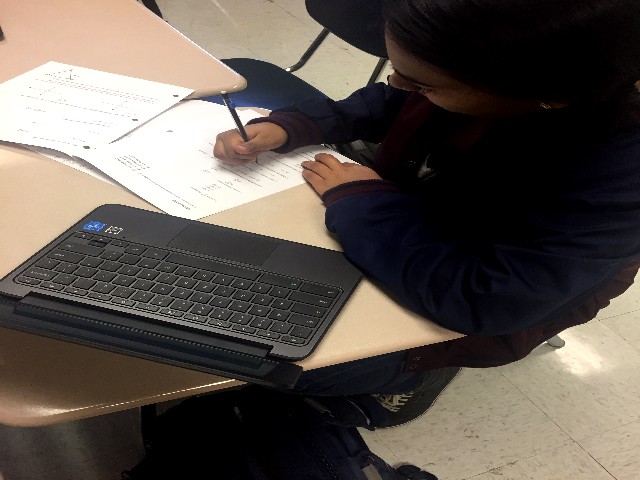Does Finland Have it Right?: Cutting Down on Homework
Homework takes up far too much time of the day for students who are also involved in extra clubs or sports. It leaves no room for time to relax at home, spend time with family or even get jobs.
December 21, 2017
After a grueling eight hours of schoolwork and learning, students should be able to go home and relax, right? Wrong. Instead, they have to spend what should be free time doing homework. On average, high school students have about 3.5 hours of homework every night. This means that students spend 11.5 hours of school and homework every day, 47.9% of their day. This is a ridiculous expectation to e for teens who are also to join clubs and involved in extracurricular. With almost half of their day being school, how are students supposed to have time for anything else?
Assuming teens get the recommended eight hours of sleep, adds up to 19.5 hours taken up of a 24 hour day. Add on to that an hour for eating, 20.5 hours. Let’s say the student is involved in a school activity or sport, which practice for three hours day. All together, adds up to 23.5 hours, giving the student just half an hour to relax, be with family, or just have time to themselves. Research shows that homework actually does not boost student achievement when and the only homework is stress. Understand that teachers will never completely eliminate homework, but they should instead focus on quality vs. quantity. , more homework would mean that the student would understand the topic, but in actuality, it really only hurts the student. Imagine you have a lump of homework sitting in front of you and you would like nothing more than to just lay down and sleep. Do you spend your time completing the work to your full ability, or do you look up the answer key because you cannot stand the idea of doing 30 math problems? Most would choose option two so they could move on to the. However, if the student saw five problems that covered what they had done in class, they would be able to complete them to their full ability, retain the information, and move onto their project without feeling overwhelmed.
Homework also has physical repercussions. With the amount of work assigned today, pulling all-nighters is not foreign to high school students. Not to mention, stress caused by too much homework results its own physical side-effects. c cause headaches , exhaustion and weight loss, which are ridiculous to experience because teacher assign too much homework.
Finland has banned homework entirely, and it has shown incredible boosts in student achievement. In fact, the graduation rate in Finland is at 93% , America falls at just 75%. They also have a rate of 2 in 3 of their students attend college, the highest rate in Europe. They also far exceed international standardized testing. Their tests scores on the PISA (Program for International Student Assessment) beat out everyone else, with them scoring n average 20 points higher than their runner up, Hong Kong. Although the success of Finland could not be solely on the fact that they do not have homework, it is still one of the main factors that differ from America and cause them to be more successful.
Banning homework clearly shows better success rates and that American students are overworked when it comes to homework. 3.5 hours of homework is completely unnecessary for student success, and teachers should heavily consider cutting down their workload for the benefit of the student body.



